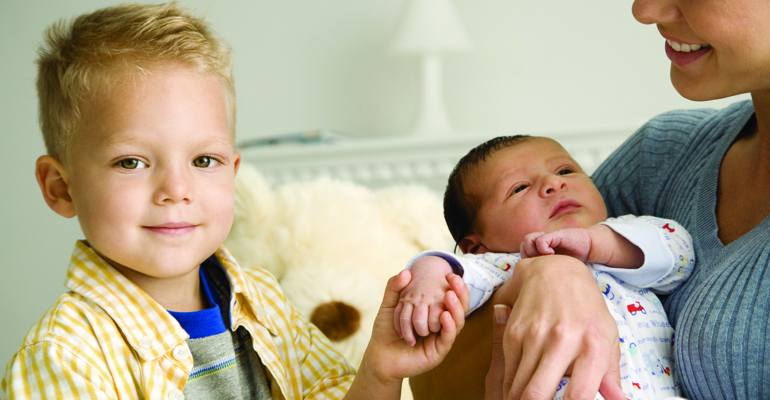Congratulations! Planning for the arrival of a new child is an exciting time. But along with all the anticipation, there’s anxiety, too. Parents know how to cope with these conflicting feelings, but young children can be overwhelmed by them.
Waiting for that new sibling seems to take forever for little kids with no patience. And their new title, Big Brother or Big Sister, can have a downside — “Now I have to share my mom and dad!”
These suggestions will help your child prepare for the new arrival and take on the role of big sib.
While You Wait
Talk about families. As you start the adoption process, introduce the idea of how families grow. You might talk about families you know who recently added a child, or read books to your child on the subject (see our suggestions, below). Discuss the different ways families can be formed, and how adoption works.
Fill in the blanks. When you receive your referral or you match with a birth mother, give your child some specifics about his new sibling. Preschoolers are concrete thinkers, so help them turn the vague idea of a new addition into a reality. Share details, if you can, like gender, eye color, hair color, and age. Point out the infants or toddlers you see while out in the neighborhood, to give your child an idea of what his sibling will look like.
Tell time like a preschooler. Children ages three to five don’t understand the concept of weeks or months, so use other markers to time the baby’s arrival, such as “after Christmas” or “the beginning of summer.” When you have a specific arrival date, let your child check off days on the calendar to count down to it.
Assign tasks during the wait. Preschoolers love to have “important” things to do. Help your child find ways to prepare to be a big brother or sister. Have him sort the baby’s toys or put clothes in drawers. Let her be in charge of showing the referral picture to relatives.
Anticipate anxiety. Preschoolers typically worry about how a sibling’s arrival will affect them: “What if the baby does not like me? What if Daddy loves him more? What if Mommy forgets about me?” They do not have words to express such worries, but you should watch for regressive behavior, such as a return to thumb-sucking, increased clinginess, or potty accidents.
After the Arrival
Become a new-sibling interpreter. Young children often misinterpret a baby’s crying to mean that the baby doesn’t like them. Help your child understand that crying means that the baby needs his diaper changed or needs to be fed. Look for ways to connect the two children. “Look how quiet she gets when you sit by her — she must be thinking, I am so lucky to have a big brother!'”
Provide opportunities to bond. Preschoolers like to be helpful, so give them things to do, like stroking the baby’s hand during feeding or singing their favorite song to the baby before bedtime.
Carve out one-on-one time. Your preschooler is in the “Look at me!” years, so make sure to spend quality time with him. Let him know there is always room on your lap and time in your evening to pay attention to her.

